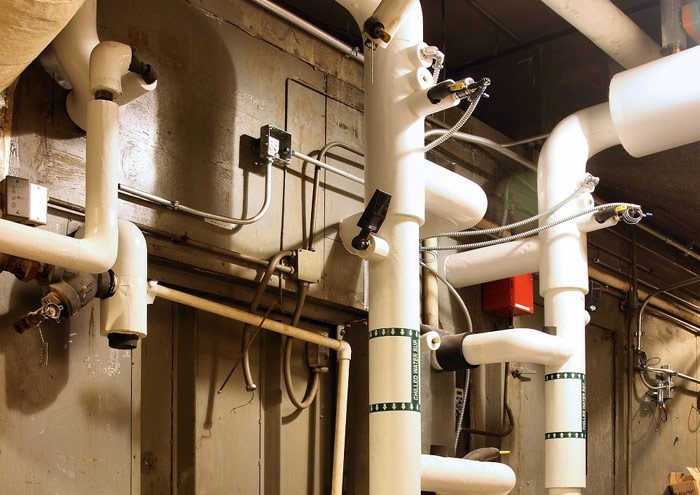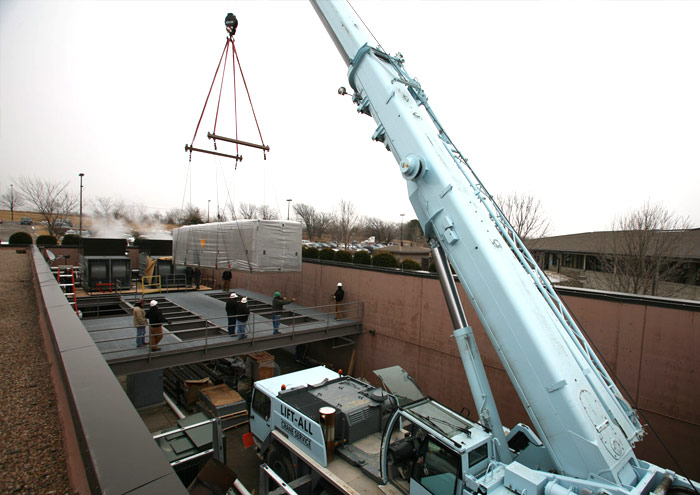An Unbiased View of Mechanical Contractor Omaha Ne
Table of ContentsNot known Incorrect Statements About Construction Contractors Omaha Ne Rumored Buzz on Commercial Air Conditioner Omaha NeAir Conditioning Contractors Omaha Ne for BeginnersPlumbing Contractors Omaha Ne for Beginners
A lot of modern-day buildings today are geared up with some type of HVAC system, and most likely 100% of them are managed by a feedback control system as in Fig. 1. 1. For this system, the objective is to keep a desired temperature level in a provided space by continuously comparing the real temperature level to the wanted temperature level (error) and activating the system accordingly. Mechanical Contractors Omaha Ne.
No matter how the system is actuated, the objective and control structure are the exact same. The something that prevails to all of these significantly various systems is the structure of the control system. That is, every system constructs a mistake signal by feeding back the real measurement of the output and compares it to the preferred worth.

Then the cycle starts all over again. Image another example to which the unity-feedback control structure applies. Picture balancing a long wooden dowel vertically on the palm of your hand (see Fig. 1. 2). Figure 1. 2. A bio-mechanical feedback control example Attempt to relate this bio-mechanical system to the unity-feedback control diagram in Fig.
3 Easy Facts About Hvac Installation Omaha Ne Explained

Now, while you have actually got the stick well balanced, attempt closing you eyes. If you resemble 99% of the population, the stick fell down. Let's see how this correlates to the block diagram. Figure 1. 3 (Air Conditioning Contractors Omaha Ne). An open-loop system. When you closed your eyes, you eliminated the sensing unit from the system. Without a sensor, the measurement y( t) can not be fed back, and the error signal no longer equates to r( t)- y( t), in reality it simply equates to r( t) (see Fig.
3). This implies that the controller (you brain in this case) has no information about the existing state of the system (is the stick balanced?) and can not intelligently choose how to activate the system (how should you move your hand?). In this scenario, the system is stated to be running open-loop.
Now that we have a sense for what open-loop and closed-loop systems are, let's go over a few of the pro's and con's of each: As we saw in the stick balancing example, in an open-loop system there is no feedback path. This suggests that, in order to do any meaningful control style, we need to understand the plant design P( s) exactly.
Hvac Companies Omaha Ne Fundamentals Explained
The following lists some essential realities about open-loop systems: If the plant P( s) is unstable to begin with, then open-loop control will never be able to support the system. Thinking the control command u( t) is actually the only alternative. Frequently a smart guess is made by means of a lookup table in systems where official source the plant is steady and relatively popular.
The essential benefit of a closed-loop system is that the controller C( s) constantly knows about the present state of the system, and can hence smartly choose how to drive the system with an appropriate control command u( t). The following lists some crucial truths about closed-loop systems: A closed-loop system can stabilize and unsteady plant P( s).
This is one of the main advantages of utilizing closed-loop control. Closing the loop around a plant can improve the performance of an already-stable system. The engineer can create the controller C( s) to highlight various system efficiency attributes, i. e. stability, tracking, effectiveness. The benefits of utilizing closed-loop feedback control are clear, and we will be specifically studying feedback systems throughout of this course.
1. 1), the input to the controller C( s) is: Ar( t), the referral, or wanted output signalCr( t) - y( t), the difference in between the preferred output and the true outputDu( t), the control commandWhat signal is actually applied to the real-life system and makes it move?Cu( t), the control commandDr( t), the reference signalHow is the measurement y( t) acquired in real life?How is the control command u( t) physically applied to the real system?In the stick balancing example, if you close your eyes, what aspect of the control loop have you gotten rid visit the website of?.
How Plumbing Contractors Omaha Ne can Save You Time, Stress, and Money.
Mechanical systems are hardware items typically with incorporated controls which will simplify and improve our lives. A few examples are producing devices, placing gadgets, automobiles and their elements, etc. Their function is closely controlled by adjusted electronic devices & software, keeping track of information can be produced by incorporated sensors enabling new function and upkeep principles.
The Lucerne University of Applied Sciences and Arts' Competence Centre Mechanical Systems (CCMS) focus is the development of such systems. Its locations of competence have a peek at this website are style, simulation, mechanics, hydraulics, robotics, automation, production and measurement engineering. Driven by the ever increasing intricacy of mechanical hardware, system approaches are inevitable for advancement and problem solving.
The everyday research study and development work of the CCMS is based upon a strong cooperation with industrial partners. Located in Central Switzerland it provides the Swiss market with application oriented solutions. In order to supply answers in an increasingly competitive environment, its research activities are concentrated on the future obstacles.